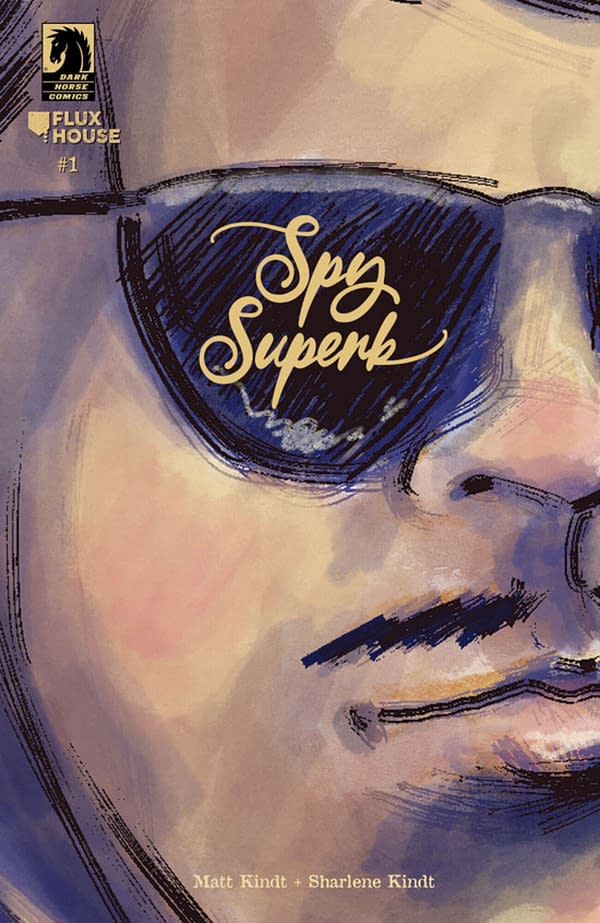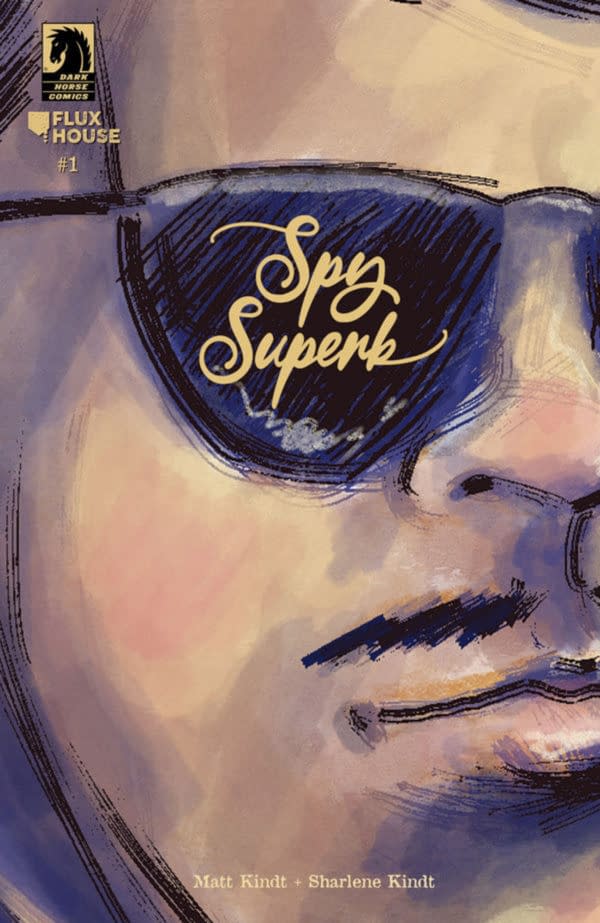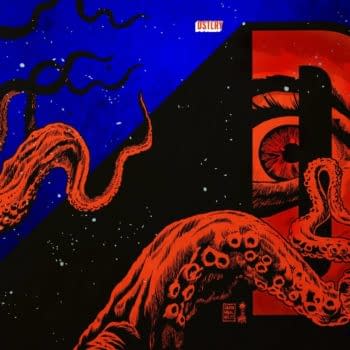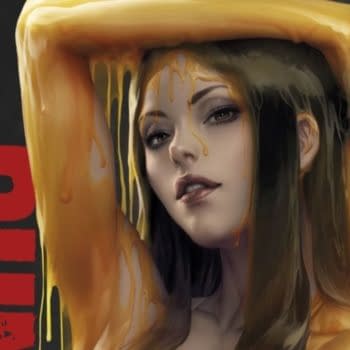Posted in: Comics, Dark Horse Comics, Review | Tagged: dark horse, matt kindt, Sharlene Kindt, Spy Superb
Spy Superb #1 Review: Falling Into Place
If you’ve seen a funny spy movie, you have an idea what’s coming in Spy Superb #1: Put Jay into trouble and watch him slapstick comedy his way out of it.
Matt Kindt's other labyrinthine series about apolitical spies returns in Spy Superb #1 with a new twist: Comedy.
Spy Superb #1 also features Kindt doing interior art for what feels like the first time in years (if you don't count the Kickstarter comic he did with Brian Hurtt and Marie Enger called HEK). The story: Presumably American spy agency has a MacGuffin out in the wild and needs to keep it in their hands. To do so, they employ a cartoonishly oblivious moron by the name of Jay. Jay's a failed writer who believes the unwritten novel in his head will bring him riches.

If you've seen a funny spy movie, you have an idea what's coming in Spy Superb #1: Put Jay into trouble and watch him slapstick comedy his way out of it.
Spy Superb #1's secret sauce might be the colorist, Sharlene Kindt. Her colors always suit the mood but also pop.
The Kindt drawn bibliography doesn't include too many comedies, but Spy Superb #1 is a fine start.
From New York Times bestselling and Harvey award-winning graphic novelist Matt Kindt comes the latest Flux House humorous espionage adventure.
It's John Wick meets Wes Anderson in this mystery-thriller about a secret organization that's developed the perfect spy. Who is the perfect spy? A spy who doesn't even realize they are a spy. AKA the "useful idiot." This particular useful idiot is named Jay. Jay is sent on missions without even realizing he's on a mission. Until he picks up the wrong phone with the wrong secret intel and now Russian hit-squads and elite assassins are after him. But Jay believes he was a sleeper agent–and really is the "spy superb". His complete obliviousness and lack of survival skills may be the only thing that saves him in this globe-trotting espionage tale . . . where nothing is what it seems . . . but also . . . kind of actually is what it seems.















